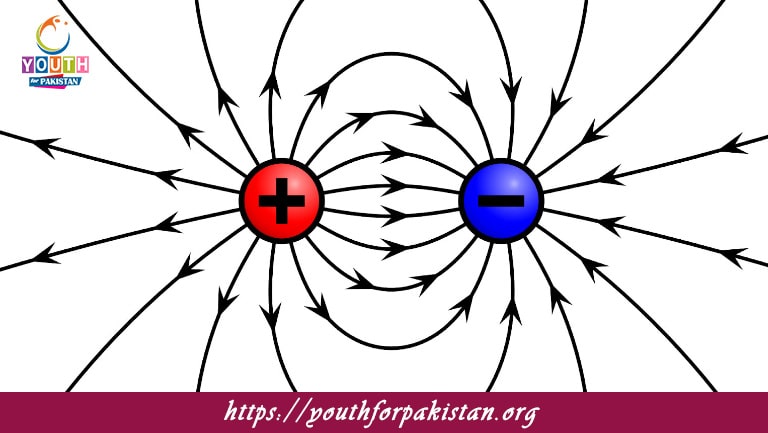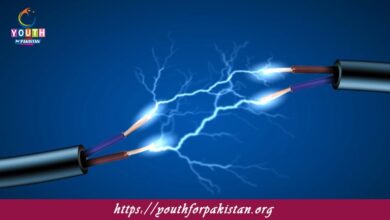Electric Field And Its Intensity MDCAT MCQs with Answers

Welcome to the Electric Field And Its Intensity MDCAT MCQs with Answers. In this post, we have shared Electric Field And Its Intensity Multiple Choice Questions and Answers for PMC MDCAT 2024. Each question in MDCAT Physics offers a chance to enhance your knowledge regarding Electric Field And Its Intensity MCQs in this MDCAT Online Test.
Electric Field And Its Intensity MDCAT MCQs Test Preparations
The electric field is defined as:
a) Force per unit mass
b) Force per unit charge
c) Energy per unit charge
d) Potential per unit charge
The SI unit of electric field intensity is:
a) Volt
b) Newton
c) Volt per meter
d) Newton per coulomb
Electric field lines never:
a) Start from a positive charge
b) End on a negative charge
c) Cross each other
d) Are parallel
The direction of the electric field due to a positive charge is:
a) Towards the charge
b) Away from the charge
c) Parallel to the charge
d) Perpendicular to the charge
The magnitude of the electric field due to a point charge decreases with:
a) The square of the distance
b) The cube of the distance
c) The distance
d) The charge
The electric field inside a conductor in electrostatic equilibrium is:
a) Maximum
b) Zero
c) Uniform
d) Variable
A charge placed in an electric field experiences a force that is:
a) Inversely proportional to the field
b) Directly proportional to the field
c) Perpendicular to the field
d) Parallel to the field lines
The work done in moving a charge in a uniform electric field depends on:
a) The path taken
b) The final position only
c) The initial position only
d) The displacement and the electric field
The electric field at a point on the axis of an electric dipole is:
a) Zero
b) Maximum
c) Parallel to the dipole moment
d) Perpendicular to the dipole moment
The electric field at the surface of a conductor in electrostatic equilibrium is:
a) Tangential to the surface
b) Normal to the surface
c) Parallel to the surface
d) Inside the surface
The magnitude of the electric field at a distance r from a point charge Q is:
a) kQ/r^2
b) kQ/r
c) kQ/r^3
d) kQ/r^4
The electric field due to a uniformly charged infinite plane sheet is:
a) Zero
b) Constant everywhere
c) Inversely proportional to the distance
d) Directly proportional to the distance
The electric field inside a uniformly charged non-conducting sphere:
a) Increases linearly with distance from the center
b) Is constant
c) Decreases with distance from the center
d) Is zero
Electric field lines are always:
a) Parallel to each other
b) Perpendicular to the electric field
c) Tangent to the direction of the electric field
d) Perpendicular to the equipotential surfaces
In a uniform electric field, the potential difference between two points separated by distance d is:
a) E/d
b) Ed
c) E/d^2
d) Ed^2
The electric field between two parallel plates with opposite charges is:
a) Zero
b) Non-uniform
c) Uniform
d) Maximum at the edges
An electron in a uniform electric field moves:
a) Along the field
b) Opposite to the field
c) Perpendicular to the field
d) Does not move
The electric field due to a dipole at a point on the equatorial plane is:
a) Zero
b) Along the axis
c) Opposite to the dipole moment
d) Along the direction of the dipole moment
The net electric field inside a hollow conductor with no charges inside is:
a) Zero
b) Non-zero
c) Depends on the shape of the conductor
d) Depends on the size of the conductor
The force experienced by a charge q in an electric field E is:
a) qE
b) E/q
c) q/E
d) E/q^2
The electric field due to a uniformly charged ring at its center is:
a) Maximum
b) Zero
c) Infinite
d) Uniform
The electric field near a point charge is:
a) Inversely proportional to the charge
b) Directly proportional to the square of the distance
c) Inversely proportional to the square of the distance
d) Directly proportional to the distance
The electric field due to a charged rod at a point along its axis is:
a) Maximum
b) Zero
c) Uniform
d) Varies with the distance
The electric field intensity at a point on the perpendicular bisector of a dipole is:
a) Along the dipole moment
b) Opposite to the dipole moment
c) Zero
d) Perpendicular to the dipole moment
The electric field due to a uniformly charged infinite line of charge is:
a) Zero
b) Constant
c) Inversely proportional to the distance from the line
d) Directly proportional to the distance from the line
The work done in moving a charge in a uniform electric field from one point to another depends on:
a) The magnitude of the charge only
b) The direction of the electric field only
c) The initial and final positions
d) The path taken
The electric field inside a cavity of a charged conductor is:
a) Maximum
b) Uniform
c) Zero
d) Varies with distance
The force between two charges is inversely proportional to:
a) The distance between them
b) The square of the distance between them
c) The product of their charges
d) The sum of their charges
The electric field at a point on the axis of a charged ring is:
a) Zero
b) Maximum at the center
c) Maximum at a distance from the center
d) Uniform along the axis
The electric field between two charges is zero at a point where:
a) The potential is maximum
b) The forces due to the charges cancel each other
c) The charges are equal
d) The distance from both charges is equal
The electric field due to a uniformly charged disc at a point on its axis is:
a) Zero
b) Constant
c) Maximum at the center
d) Varies with distance
The electric field inside a uniformly charged non-conducting shell is:
a) Zero
b) Uniform
c) Maximum
d) Depends on the distance from the center
The electric field outside a uniformly charged spherical shell is:
a) Zero
b) Uniform
c) Equivalent to that of a point charge at the center
d) Equivalent to that of a point charge at the surface
The electric field intensity at a point due to an infinite plane of charge is:
a) Dependent on the distance from the plane
b) Independent of the distance from the plane
c) Zero
d) Maximum at the plane
In an electric dipole, the two charges are:
a) Equal in magnitude and opposite in sign
b) Equal in magnitude and same in sign
c) Unequal in magnitude and opposite in sign
d) Unequal in magnitude and same in sign
The electric field between two parallel plates with like charges is:
a) Zero
b) Uniform
c) Maximum at the edges
d) Non-uniform
The electric field inside a parallel plate capacitor is:
a) Zero
b) Uniform
c) Maximum at the edges
d) Varies with distance
The electric field intensity at a point due to a point charge Q at a distance r is:
a) Q/4πε₀r
b) Q/4πε₀r^2
c) Q/4πε₀r^3
d) Q/4πε₀r^4
In a uniform electric field, the potential difference between two points is:
a) Independent of the electric field
b) Directly proportional to the electric field
c) Inversely proportional to the electric field
d) Independent of the distance between the points
The electric field at the surface of a charged conductor is:
a) Zero
b) Tangential to the surface
c) Normal to the surface
d) Parallel to the surface
If you are interested to enhance your knowledge regarding Physics, Chemistry, Computer, and Biology please click on the link of each category, you will be redirected to dedicated website for each category.





